















COMPACT AND MORE POWERFUL, THE M SERIES ENGINES DELIVER RELIABLE HIGH POWER FOR PRIME AND CRITICAL APPLICATIONS.











The newest, most comprehensive powergen range on the market.




















Publisher/Sales DIrector
Neb Saric neb@wipmagazines.com
Publishing & Events Director
Richard Teasdale richard@wipmagazines.com
Managing Editor
Aidan Turnbull aidan@wipmagazines.com
Accounts Manager
Alison Williams accounts@wipmagazines.com
Sales & Marketing Manager
Sarah Hallows sarah@wipmagazines.com
Far East Sales
Bob Liu Shanghai, China bob.liu@ronco.com.cn
US Sales & Subscriptions
Jelena Milojevic power@wipmagazines.com
Austrian & German Agent Mario Dobresko power@wipmagazines.com
Power Media International Group, The Courtyard, 30 Worthing Road, Horsham, West Sussex, RH12 1SL, UK

Tel: +44 (0) 1403 888019
www.powermediagroup.co.uk
© Worldwide Independent Power (ISSN 1468 7100)

Australia’s economy is decarbonising, and the science and economics of climate change mean that it is inevitable that this will continue. The country’s collective challenge now is to accelerate this, while reducing cost and disruption through coordination, innovation, and clear market settings.

With $76 billion of investment. pledged Australia’s abundant renewable energy resources mean the nation is well placed to become a clean energy superpower. The Government’s comprehensive set of policies include:
*$20 billion investment in Australia’s electricity grid to accelerate the decarbonisation of the grid.
*An additional $300 million to deliver community batteries and solar banks across Australia.
*Up to $3 billion investment of from the new National Reconstruction Fund to support renewables manufacturing and low emissions technologies.

*Powering the Regions Fund to support the development of new clean energy industries and the decarbonisation priorities of existing industry.
A Deloitte Report suggests if Australia acts with the world to limit warming and reach net-zero by 2050 then the economy could actually gain $680 billion by 2070. Media reports suggest that Australia’s carbon emissions edged lower in 2022 with reductions from the electricity sector, partly countered by increases in pollution from transport and agriculture.
The country’s emissions last year totalled around 463.9m tonnes of carbon dioxide-equivalent (Mt CO2-e), down 0.4% or 2m tonnes from the previous year. Preliminary estimates for the year to 31st March 2023 indicated emissions totalled 464Mt CO2-e, or 0.2% lower on a rolling 12-month tally, the national greenhouse gas inventory shows.
Between June 2005 and the end of 2022, carbon pollution dropped 24.7%, or slightly more than half the Albanese government’s 43% emissions reduction target by 2030.
Australia’s total budget under the Paris climate agreement is 4.353bn tonnes of CO2-e, and so far it has burned through 27% of the total in 25% of the accord’s time period.
The reduction in emissions in the power sector is apparent , with a limited number of polluting sites closely monitored by regulators. Emissions from the power sector industry have fallen 21.4% or 42.1Mt CO2-e since June 2005, although the sector continues to account for about a third of recorded pollution. Falling emissions from stationary energy, such as that used in manufacturing and gas heating in homes, all retreated in 2022, easing back 1.5% or 1.6Mt CO2-e which is great news for Australia’s efforts so far.
AIDAN TURNBULL Managing Editor
“AUSTRALIA’S POWER GENERATION SECTOR HAS THE EMISSIONS ISSUE UNDER CONTROL .”
“
GOOD NEWS IN AUSTRALIA’S HEROIC STRUGGLE TOWARDS RAPID DECARBONISATION
2023-27
Last year - 2022 - was a good year for gas turbine sales, with an increase in both units ordered as well as a significant increase in MWs sold, with a large number of “jumbo” unit sales driving the increase in overall MWs. Markets are now seeing the impact from the war and crisis in Ukraine, with lower demand for Russian natural gas causing a shift from new pipeline gas turbines to regions like North America, says the feedback from analysts from Gas Turbine World.

GAS-FIRED GENERATORS

Five biogas generators were provided by Jereh Combined Energy Co., Ltd. to a biomass natural gas power plant based in China. These gensets have been installed at two cattle farms in China. The annual production capacity of the site’s biogas facility is over 100 million kWh, making this is the largest project of biogas power generation in the field of animal husbandry in China.

PAKISTAN BEVERAGE COMPANY GETS GENSET
AKSA signed a deal with a major beverage company based in Pakistan to provide a 55MW power supply package. The deal consisted of the supply of 2 x 2250 kVA and 1 x 500 kVA AKSA Power Generation DG sets complete with a SCADA Monitoring System. ESL has supplied around 55 MW power to this customer with installation and commissioning of dozens of sets up to 2250 kVA with Cummins
DIESEL GENSETS FOR DESALINATION
Coelmo has supplied a generating set - model PDT408A2 Perkins engine 4008-TAG2A version with a Mecc Alte alternator model ECO43 VL4 A - to a desalination plant in Yanbu, Saudi Arabia, where it will provide backup power for a saltwater reverse osmosis plant. The reverse osmosis process was chosen by the client company because of its potential for effective energy recovery.
BACKUP POWER FOR DATA CENTRE
A stationary fuel cell (FC) recently installed on the American Honda campus in Torrance, Calif. USA, is a first step toward future commercialisation of zero-emission backup power generation.
In the coming years, Honda says it will begin applying stationary FC power station technologies to Honda manufacturing facilities and data centres around the world. Honda is advancing hydrogen fuel cells to provide clean, safe and secure energy toward its global, reports the company.

THE FIRST GRIDCONNECTED BESS LINKS FOR NZ Saft, a subsidiary of TotalEnergies, has been awarded a major contract by Meridian Energy to construct New Zealand’s first large-scale grid-connected BESS.

Located at Ruakākā in the country’s North Island, the 100-megawatt (MW) BESS will improve the stability of the national grid, as intermittent renewable power generation increases in New Zealand.The BESS is the first stage of a project which will include the construction of a co-located 130 MW solar farm.

DISTRIBUTED ENERGY & GAS GENSETS
One of Turkey’s largest chicken meat producers covers a large part of its energy requirements with combined heat and power plants for generating electricity and heat. Iltekno, MWM’s distributor in Turkey, planned and supplied the plants with the right equipment. This study looks at one of Turkey’s largest chicken meat producers, the food company Beypiliç, located in the province of Bolu.
GENSETS IN THE RED SEA PROJECT
Zahid Tractor was selected by a major contractor to supply power solutions which deliver 32MW of prime power for The Red Sea Project, a nearly 11,000 square mile (28,000 sq km) fully-regenerative tourism destination currently under development along Saudi Arabia’s west coast. Zahid Tractor is has supplied 69 generator sets capable of running on both conventional diesel and B100 biodiesel.

HOW YOU CAN REDUCE UPS TOTAL COST OF OWNERSHIP BY RIGHTSIZING
David Bond, Chairman, Centiel UK, asks - dow do professional UPS users ensure they install a UPS that always provides them the highest level of power protection at the lowest possible cost throughout the UPS’s working life? The answer is either have a perfect vision of the future or install a scalable UPS.
HYDROGEN-GAS READY BACKUP POWER
Siemens Energy has supplied 4 x 2MW
Hydrogen-ready generators for an industrial client based in Ontario, a city in southwestern San Bernardino County in the U.S. state of California. SIEMEN’s manufacturing client in Ontario now operates a facility which can rely on electrical power from an 8 MW ‘carbon neutral’, peak mitigation, backup unit.
GENSET ENERGISES A COMPANY IN THE MOROCCO PAPER INDUSTRY
A model DP222LBF DOOSAN engine is the key power provider for a HDW-675 T5 three-phase soundproof generator set now at CMCPInternational Paper - one of the largest paper and cardboard production plants in Morocco. The genset with its STAMFORD alternator currently ensures a stable and reliable backup power source.









Volvo Penta is one of the world’s biggest independent suppliers of engines for power generation. It is our business to build and support engines that make the most of any OEM’s genset design – a range of reliable, fuel-efficient diesel engines that meet a wide span of specific demands. Mobile or stationary. 24/7 or standby. In any climate: freezing or scorching, dry or wet, in deep shafts or at high altitudes. Tell us your needs and we’ll show you the engine. www.volvopenta.com/industrial
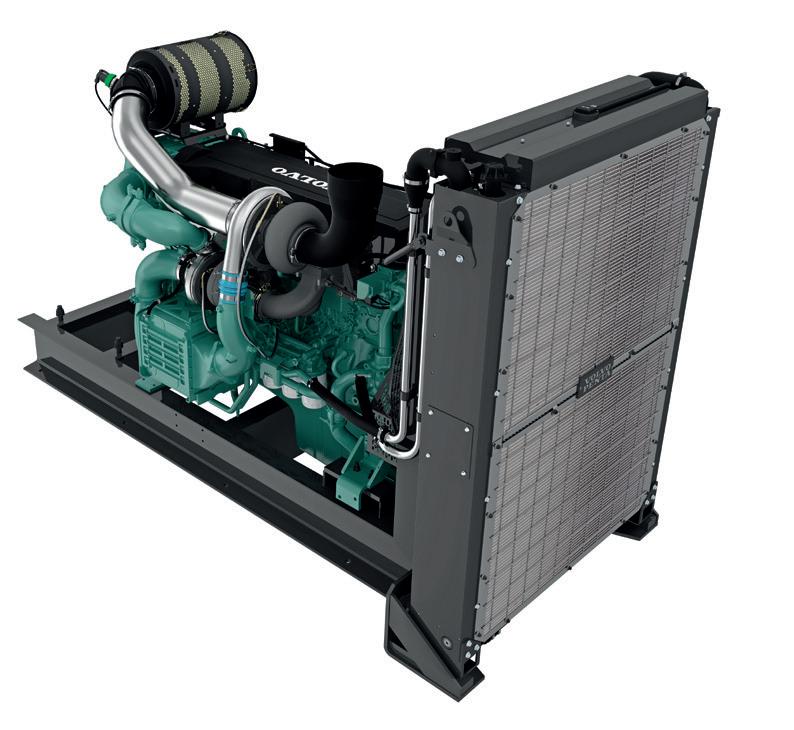
Air Products has signed an investment agreement with the government of the Republic of Uzbekistan and Uzbekneftegaz JSC to acquire, own and operate a natural gas-to-syngas processing facility in Qashqadaryo Province, Uzbekistan for US$1 billion.

The natural gas-to-syngas industrial complex is an integral part of state-owned energy company Uzbekneftegaz JSC’s multi-billion gas-to-liquid (GTL) facility - one of the most advanced energy plants in the world - producing 1.5 million tonnes per year of high value-add synthetic fuels for domestic use and potentially export, according to Air Products. Under the purchase agreement, Air Products will acquire, own and operate two large-scale air separation units, two largescale auto-thermal reforming units, and a hydrogen production unit.
GHADDAR MACHINERY has supplied a 500 kVA diesel generator powered by Cummins Engine KTA19G4 and Leroy Somer TAL0473C Alternators. It is currently providing backup power for the University campus at Basra, Iraq.
The KTA19-Series engine driving the genset benefits from years of technical development and improvement to bring customers an innovative and future proof diesel engine that keeps pace with ever-changing generator set requirements.
Recognized globally for its performance under even the most severe climatic conditions, the KTA19-Series is widely acknowledged as the most robust and cost-effective diesel engine in its power range for the generator set market. Features of the engine include:
*Turbocharger – Cummins Turbo technologies (CTT) exhaust gas driven turbocharger mounted at top of engine.
*Fuel System – Cummins PT™ self-adjusting system. Integral dual flyweight governor provides overspeed protection independent of main governor.
*Aftercooler – Large capacity aftercooler results in cooler, denser intake air for more efficient combustion and reduced internal stresses for longer life.
*Cylinder Block – Alloy cast iron with removable wet liners. Cross bolt support to main bearing cap provides extra strength and stability.
* Service and Support - G-Drive
KOHLER has supplied and installed two 1,900 KVA diesel gensets in an ISO 40-ft steel container at a data centre in Cairo, Egypt.
The power package also includes a fuel system for Tier 3 data centre. A KOHLER spokesman comments: “This project reflects our excellence and professionalism in providing cutting-edge and cost-effective solutions for the data centre solutions.”
The T1900 1900kVA KOHLER generating set is equipped with a Mitsubishi engine. The generator set, its components and a wide range of options have been fully developed, prototype-tested, factory built, and production-tested

The generator sets are designed in accordance with ISO8528 and approved for use with HVO (Hydrotreated Vegetable Oil) according to EN15940.
Each generator offers high reliability enhanced through a simple design for optimal functional performances; its high performances turbochargers providing high engine performances under all loads. Each set offers easy operation and maintenance: accessories requiring daily maintenance thanks to components conveniently located on the same side of the engine.
The set’s alternator provides industry-leading motor starting capability.
There is an excitation system which permits sustained overcurrent >300% In, during 10 sec. It is built with a class H insulation and IP23. Cooling is provided via a compact and complete solution using a mechanical/electrical radiator.


Through its local distributor, TPL, CUMMINS has provided 1 x 400 kVA + 1 x 200 kVA + x 15 kVA diesel generators for George Steuart Teas (Pvt) Ltd in Sri Lanka.
TPL says it is is proud to announce that it has ‘successfully supplied and installed three Cummins diesel generators for George Steuart Teas (Pvt) Ltd in Kelaniya’.
The generators are rated at 400kVA, 200kVA, and 15kVA, and they are equipped with Smartgen controllers to ensure that they are synchronized and operate efficiently.
A spokesman said: “This project is a testament to TPL’s commitment to providing our customers with the best possible power solutions. We are confident that these generators will provide George Steuart Teas with the reliable and efficient power that they need to
operate their business. The C400D5 400 kVA offers the following features: Standby: 400 kVA / 320 kW & Prime: 360 kVA / 288 kW.
The engine is a Cummins QSG12-G1 engine with a STAMFORD S4F alternator, Voltage: 380-440V, Frequency: 50Hz, Amps Per Phase: 576 and a PowerCommand 2.2 control panel.
The new QSG12 brings a major advantage for Tier 4 Final and Stage IV equipment installations by restoring the envelope size of the QSM11 predecessor, used for Tier 3 and Stage IIIA applications. Higher efficiency air handling and advanced combustion give the QSG12 real advantages.
TIER 3 DATA CENTRE IN CAIRO, EGYPT, INSTALLS CRITICAL POWER SYSTEM TO MITIGATE POTENTIAL GRID OUTAGES IN THE CAPITAL

Header tank heat exchangers

For engines rated up to and in excess of 1 MW.








Water cooled intercoolers
For engines rated up to 850 kW.
Engine & transmission oil coolers

Heat recovery for engines rated up to 8900 kW, with up to 30 bar oil pressure.
Exhaust gas heat exchangers
For engines rated up to 1 MW, recovering up to 673 kW of heat.

Efficient, cost effective cooling solutions for Engine Driven Gen-sets, Pumps, HPU’s and Compressors; Co-Generation Systems; Off Highway Vehicles; Fire Protection Systems, plus Marine Engines, Transmissions and Gen-sets.




Visit www.ej-bowman.com for full details of the extensive range, call our technical sales team on +44 (0) 121 359 5401, or email sales@ej-bowman.com

The latest V-Type alternator has been developed in response to changing market needs and has been built for optimum performance and reliability in harsh environments. Having undergone rigorous testing, which has resulted in our most resilient product ever; a product that is designed to enable reliable power generation when faced with forces of nature. With over 75 years in the power generation market we pride ourselves on being the Power from Within the systems and generator sets that our customers produce.

Choose wisely… Choose the V-Type.
The world’s largest independent producer of alternators 1-5,000kVA
GENESAL ENERGY has provided emergency backup power to a number of prestigious hospitals in recent years, assisting in both international and domestic projects such as the refurbishment of the 12 de Octubre Hospital in Madrid.
Genesal’s latest contract involved the island of Trinidad and Tobago where the company has supplied two GEN1500TC 1500 kVA diesel generators capable of mitigating power failures in just seconds.
The generator sets were fitted with - 40 decibel baffles to ensure a low noise level and container with integrated fuel tanks for maritime transport to the Caribbean destination.
The company’s engineering team has supervised the design, manufacturing, commissioning and maintenance of the equipment which has been developed to work in a fail-safe environment.
Two 1500 kVA gensets had to provides low noise level and be rugged enough to cope with the regular Caribbean hurricane seasons once installed in a hospital complex where power cuts can occur due to the weather conditions.
GE Vernova’s Gas Power business has announced the completion of the safe transport and delivery of one of the world’s largest HRSG Supermodules from South Korea to Japan.

These large, prefabricated Supermodules are for three GE Heat Recovery Steam Generators (HRSG) which will be installed at Goi Thermal Power Station located in Chiba Prefecture east of Tokyo. GE will work with Toshiba to integrate the Supermodules at the plant. The project, celebrated in conjunction with the U.S. National Safety Month, further demostrates the company’s commitment to occupational safety and health.

Features include a 40ft HC Container, a 1500 kVA MTU engine and a 1,500-litre integrated fuel tank. Each genset offers Prime Power (PRP): 1350 kVA & Standby Power (STP): 1500 kVA, Voltage: 480/277 V, Frequency: 50 Hz and RPM: 1500 RPM. The alternators used are STAMFORD®.
Doosan Heavy Industries and Construction has secured a turbine supply contract from KEPCO Engineering and Construction (KEPCO E&C) for its Jeju Hallim offshore wind farm in South Korea.
Under the US$170m) contract, Doosan will supply 18 units of its 5.56MW offshore wind turbine model. The turbine, with blades measuring 68m in length, has been designed to withstand severe windstorms.
The 100MW offshore wind facility will be built near the waters of Hallim Port, located in the north-west region of Jeju island.
Jeju Hallim Offshore Wind Power Company, which was created by Korea Electric Power Corporation (KEPCO), Korea Midland Power, Hyundai Engineering and Construction (Hyundai E&C) and KEPCO E&C, owns the wind facility.
Doosan Heavy Plant EPC Business Group CEO Inwon Park said: “We find it truly meaningful to be a part of the Jeju Hallim Offshore Wind Farm project.

He told WIP: “This is not only Korea’s largest offshore wind farm project, but it is also the first offshore wind farm project to be pursued in Korea since the government announced its Renewable Energy 3020 Plan.We will do our utmost to ensure the project’s successful completion so that we may once again demonstrate the competitiveness of South Korea’s offshore wind power.
“We will also endeavour to promote the domestic wind power industry.”
Doosan will also sign a longterm agreement to provide maintenance services for the wind turbines after construction.
Capstone Green Energy Corporation has announced that Supernova Energy Services SAS, its authorised Distributor in Colombia, has secured an order for a C1000 Signature Series microturbine.

The system will be operated at an industrial dairy alongside an Alfa Laval steam boiler evaporator, producing 6,200 lbs. of steam per hour.
Alfa Laval AB is a Swedish company founded in 1883, providing specialized heat recovery products, and is a Capstone Green Energy approved Network Partner for heat recovery systems.
It is expected to be commissioned in October 2023.
Capstone Green Energy President and Chief Executive Officer, Darren Jamison, said: “For operations
like a dairy where any loss of power can result in product waste, the reliability of a Capstone microturbine makes it a natural choice.
“This is particularly true in locations where electricity from the grid is relatively unreliable.
“Confidence in Capstone’s reliability combined with the turbine’s low maintenance requirements and compatibility with other technologies, like the steam boiler being used here, continue to prove the value of Capstone’s modular design and engineering as well as its versatility for use in multiple industries.”
C1000S MICROTURBINE FOR INDUSTRIAL-SCALE DAIRY PLANT BASED IN COLOMBIA
Germany’s RWE has begun construction of one of Germany’s largest battery storage facilities at its power plant locations in Neurath and Hamm.

The facility will have a capacity of 220 MW and storage capacity of 235 MWh. A total of 690 lithium-ion battery blocks will be installed at the facility, involving an investment of approximately €140 million. The storage facility is providing a major boost to structural transformation in North Rhine-Westphalia. By making practical use of the existing locations and grid connections, we are making the traditional power plant sites of Hamm and Neurath important partners for renewables.
The BESS is scheduled to supply balancing energy to stabilise the electricity grid from the second half of 2024. This will entail the plant taking excess power from the electricity grid and feeding it back into the system when required, in order to maintain the required grid frequency. It will be deployed on the wholesale market.
The New York Power Authority has completed a $70 million upgrade and modernization of its Long Island Sound Cable (Y-49), an underground transmission line that transverses the Long Island Sound from Westchester County to Nassau County, carrying up to 600 megawatts of electricity to Long Island.
The transmission project accelerates progress against New York State’s goal for 70% of the state’s electricity to come from renewable sources by 2030. It also advances the state’s path to realise a zero-emission grid by 2040 as outlined in the Climate Leadership and Community Protection Act (the Climate Act).
“With this comprehensive modernisation project completing on schedule and ahead of the peak demand summer season, the Long Island Sound Cable will help ensure reliable transmission of power to the nearly three million New Yorkers that make Long Island their home,” said Michael Balboni, NYPA trustee and Long Island resident.
The reconductoring project included the replacement and commissioning of the Nassau County section of the cable. .

The 26-mile, 345-kilovolt transmission line was placed into service in May 1991 and is part of a statewide network of approximately 1,400 circuit-miles of high-voltage transmission lines and associated substations owned by the Power Authority.
The Power Transmission & Distribution Business of Larsen & Toubro has achieved important milestones for the Power Elements and Grid packages of the world’s largest green hydrogen plant being built by NEOM Green Hydrogen Company.
Located at Oxagon in Saudi Arabia’s region of NEOM, NEOM Green Hydrogen Company (NGHC) is an equal joint-venture by ACWA Power, Air Products and NEOM.

NGHC is setting up a mega plant to produce green hydrogen at-scale for global export in the form of green ammonia with a total investment of USD 8.4 billion.
Supported by 23 local, regional, and international banking and financial institutions, the project has now achieved full financial close, and construction is moving forward.
A few quarters back, L&T received the nod to establish the Renewable Energy Generation, Storage and Grid infrastructure, from Air Products, the system-integrating EPC Contractor and exclusive off-taker of green ammonia to be produced from the project. The value of the packages awarded to L&T aggregate to US$ 2.779 billion. Since then, significant progress has been achieved in various activities including surveys, design & engineering, establishment of temporary facilities and procurement of long lead items.
Under these contracts, L&T will engineer, procure, and construct a 2.2 GWac PV Solar Plant, 1.65 GW Wind Generation Balance of Plant and a 400 MWh Battery Energy Storage System.
About:Energy has successfully closed a seed investment round with funding of £1.5m with participation from HighSage Ventures, Vireo Ventures, Rishi Khosla, Plug & Play Ventures, and Electric Revolution Ventures.
The funding will enable the battery software company, which started trading in 2022 after spinning out of the University of Birmingham and Imperial College London, to establish an independent laboratory.

The company is keen to expand itsteam, and accelerate industry adoption of its first product - a proprietary software platform called The Voltt, which was launched just two months ago.
The transition to electrification involves meeting the huge engineering challenge of
building products with batteries and this requires accurate modelling of how a battery generates heat, fast charges, and ages over its lifetime.
To do this, the company’s founders will leverage existing world-leading research from Imperial College London and the University of Birmingham, which includes expertise in both electrochemistry and engineering.
The Voltt - says the company - is set to transform the battery value chain by offering a comprehensive library of commercially available cells and their attributes alongside advanced modelling capabilities.
£1.5 MILLION INVESTMENT ROUND WILL HELP UNIVERSITY SPINOFF COMPANY TO DEVELOP ADVANCED BATTERY TECH
NEOM TO BOAST THE WORLD’S LARGEST GREEN HYDROGEN PLANT AS PART OF SAUDI ARABIA’S RENEAWABLE ENERGY GENERATION & STORAGE INITIATIVE


In a move designed to supplement its power generation business, Volvo Penta is launching a new offer – a high-performance subsystem based on the Volvo Group’s electromobility platform, optimised for OEMs’ BESS applications.
“Battery energy storage is increasingly in demand for a variety of applications including utilities, factories, decentralised microgrids and mobile charging stations,” commented Hannes Norrgren, President of Volvo Penta Industrial.
“As our solution is application agnostic, we see huge potential for its adoption. Together with OEMs, our solution provides possibilities to store energy from and add resiliency to renewable solar or wind-powered sources, opening new business models that appeal to end customers on their road to net-zero emissions.”
The signature attribute in Volvo Penta’s modular and scalable BESS subsystem is a high-energydensity and high-power battery system with a favorable C-rating – which ensures quick and substantial charge and discharge, in response to sudden demand.
These battery systems are energy and poweroptimised to meet business and operational needs. From just one, to as many units as are required for the OEM’s BESS applications, Volvo Penta’s solution is scalable up to hundreds of mega-watt hours.
“BESS will enable highly flexible energy solutions, making low to no emissions a far more viable proposition for mobile and stationary use,” added Hannes. “We’re starting by introducing the solution to customers in North America and Europe, followed by other markets, and are eager to begin collaborating with OEMs to kickstart new projects in BESS.”
Volvo Penta’s offer is built on the Volvo Group’s electromobility platform which has seen success in applications such as trucks, buses and construction equipment. In parallel, the Volvo Group is also investing in battery cell and pack manufacturing. .
“Volvo Penta’s engineering expertise, together with knowledge from the Volvo Group, will be key in guiding our OEMs in developing a battery energy storage solution to meet new segment and application needs as we jointly navigate this energy transition,” concluded Heléne Mellquist, CEO of Volvo Penta. “The company has taken an exciting next step in its journey to visualising and realising an ecosystem of road-to-netzero solutions that not only strengthen our generation business but go well beyond into new segments.”
Clarke Energy in Bangladesh has delivered an in-situ power generation plant to Mir Cement Ltd., providing energy resilience with reduced costs and CO2 emissions at their cement grinding plant in Narayanganj.
A Jenbacher Type-6 gas genset, has been installed within the building at the facility. At full operating capacity, the plant is expected to grind 2.400 tonnes of cement per day, reports Clarke Energy.

Mr. A.K.M Zaidul Islam, Director Sales Clarke Energy Bangladesh, tells WIP magazine: “When we did the load analysis for Mir’s cement manufacturing unit, the ball mill block load was a major challenge identified.
“After having detailed discussions with our engineering department, we offered them an integrated solution wherein the offered Jenbacher genset runs in grid synchronised mode during the start of one of the ball mills and once the load has been stabilized, it switches to island / isolated mode of operation, making the installation grid independent”.
Mir Cement is one of Bangladesh’s most successful cement manufacturing brands. Mir Cement is linked to Mir Akhter Hossain Limited, one of Bangladesh’s leaders in infrastructure & project construction and a Mir Group of Companies Limited subsidiary.

Through the years, Mir Cement has invested heavily in R&D to produce the best quality cement with a minimal carbon footprint. It has helped to enhance the characteristics of the cement blend, technological integration in manufacturing, storage, and supply chain, user demands, and performance in the long term.
The company’s quality business approach has also made Mir Cement one of Bangladesh’s most reliable cement producers. Mir Cement has been part of many pioneering projects in Bangladesh.
These include: Mirpur-Kalshi Flyover, Dhaka Elevated Expressway, Dhaka Medical College Hospital, Liberation War Museum, Kachpur Meghna Gomti 2nd Bridge, Mugda Medical College and Hospital, the Hotel Intercontinental (New Block), Krishibid Institution Bangladesh, Bosila Bridge, Shahid Ahasan Ullah Master Ural Setu, Radisson Blu Water Garden, and the Rooppur Nuclear Power Plant.

A tidal-energy project located near Singapore has begun generating power for the first time.
The Jpanaese company Nippon Yusen Kaisha (NYK) is participating in this demonstration project, which is being conducted by Bluenergy Solutions, a marine renewable energy solution provider, at Raffles Lighthouse on Satumu Island, about 14 kilometres from the main island of Singapore.
The project has involved installing small tidal gensets (7kW x 4 units) offshorethese will ultimately replace all the local diesel power generation with tidal power generation as part of the electricity supply to the lighthouse.
The Indonesian government has revealed its latest ambitious plan to lay an underwater power cable to connect five main areas of Indonesia to one central power grid.
The project will be known as the Nusantara Supergrid Electrical Network. Once the various renewable power sourcess are being fed into the Supergrid power network clean energy (EBT) can be be used more effectively in the national EBT-based energy mix.
Secretary General of the Ministry of Energy and Mineral Resources (ESDM) Rida Mulyana commented: “We will create what is called a national supergrid because we are an archipelago consisting of 17,000 or 18,000 islands. In time we will connect these with underwater power cables.”
The development of the the Supergrid will mirror that of the Telkom cable network which already connects all parts of Indonesia through undersea cables across almost all parts of Indonesia, from Papua to Aceh.

The development of the Super Grid as an EBT-based electricity distribution solution was first unveiled by the Minister of Energy and Mineral Resources, Arifin Tasrif, at the 2022 BloombergNEF Summit entitled ‘Indonesia’s Sustainable Energy Transition Ambition’ in Nusa Dua, Bali, in 2022.
Minister Arifin confirms that the supergrid is one approach to achieve the national Net Zero Emissions (NZE) target in 2060.
Four years ago GE pledged $60 million to equip its Singaporean site for advanced gas turbine repairs. Today, GE’s Repair Solutions Singapore (GRSS) is now a global hub for fixing the key components in the world’s fastest-growing fleet of H-Class heavy-duty gas turbines.

Now the site is stepping up its technical expertise yet again. It has gained the capability to repair a crucial part of GE Gas Power’s HA turbine, a symbol of Asia’s growth to gas-fuelled power. That’s a potential game changer for Asian power generators, who have driven demand for the highly efficient HA in recent years, and it marks another step in GE’s broader ambition to make electricity more globally accessible.
No longer do customers have to send HA rotors, the fast-whirling shaft which sucks air into the turbine’s combustion section and spins the generator, to GE’s specialist shops in North America and Europe when they require attention.

Doing the job in Singapore can cut as much as two months off the repair cycle. That wins back thousands of megawatt-hours of generation and millions of dollars in revenue for Asian customers, and significantly reduces the carbon emissions associated with a rotor repair job.
“This is a very significant improvement to the lead time and delivery of repairs that supports the outage needs of our Asian customers,” says Morgan Terrill, an executive of Supply Chain Development for GE.
State Pharmaceuticals Manufacturing Corps (SPMC) situated in Rathmalana, Sri Lanka, now uses a 500 kVA TEKSAN diesel Power Generator for its stateof-the-art laboratories and production facilities during power outages. The Nativeway 500 kVA generator from Teksan has the following design feature and include a high quality assembly enclosure with strong steel plate providing stiffness, rigidity and low vibration transfer. It has powder coated paint work to minimise corrosion and is compact and robust giving it a long life. There are protection guards in the radiator. It comes with a full 18-month warranty from date of purchase or 12 months from date of commissioning. T he Perkins 500 kVA generator model has a prime power output of 500 kVA, 400kW and a standby output of 550kVA, 440kW at 0.8 power factor, 3 phase, 4 wire, 415/240 / 400/230 / 380/220 Volts, 50 Hz at 1500 RPM.
The complete generating set is mounted in a heavy gauge steel, weatherproof and acoustic enclosure.
The set features an Auto start Deep Sea Electronics (DSE) digital control panel including temperature gauges, engine protection, controls and alarms.
There is an integral fuel tank with fully-bunded base protection, and the genset is capable of a minimum of 8 hours’ operation at full load.
Teksan Generator has a reputation for manufacturing its range of rugged and reliable diesel generators, natural gas and biogasdriven generator sets, mobile generator sets, portable generator sets and cogeneration units.
500 KVA DIESEL GENSET FOR A STATE PHARMACEUTICALS MANUFACTURING CORPORATION IN SRI LANKA

Whether it’s our flawless 9-series, 13-series or V8 16-series of engines, Scania Power Solutions will make sure you get it right. Our team have all the experience and sheer depth of knowledge to match the perfect engine to your power generator needs, every time. And because Scania Power Solutions lead the way in Stage V compliance, you can be sure that you’re choosing from a range of engines – from 202kW to 566 kW – that is not only super-efficient, reliable and economical, but sustainable, too. When it has to work, it has to be Scania.

SPEAK TO OUR SCANIA POWER SOLUTIONS
TEAM TODAY – CALL 0845 034 3034

Last year - 2022 - was a good year for gas turbine sales, with an increase in both units ordered as well as a significant increase in MWs sold, with a large number of “jumbo” unit sales driving the increase in overall MWs.
This was the conclusion reached by Gas Turbine World (gasturbineworld.com/market-forecast).


According to its analysts, price increases, driven by higher costs, will push new unit sales above $69 billion over the next 5 years.
In 2020, gas turbines sized 150MW or greater dominated order activity with units sized 300MWs or more increasingly taking a larger share of the market.
This trend reversed in 2021, with units ranging from 30MW to 100MW seeing increased support as backup for renewable power.
This monentum continued in 2022, with growth in sales of aeroderivative gas turbines. At the smaller MW end of the market, gas turbines sized 10MW or less have seen their market share decrease, and we anticipate this trend to continue.
The market for small gas turbines under 5MW has almost disappeared due to inroads by reciprocating engines. In 2022, Mitsubishi Power became the overall market leader for the first time in terms of MWs sold.
Markets are now seeing impacts from the war and crisis in Ukraine, with lower demand for Russian natural gas causing a shift from new pipeline gas turbines to regions like North America, says the analysts from Gas Turbine World.
The analysts say: “Looking ahead, we anticipate coal retirements in North America, Germany and China will mainly benefit from large Heavy Frame gas turbines.
“The aero gas turbine market for equipment which provides backup capacity for renewable energy, will benefit from higher demand and steady pricing.
“In the Oil & Gas Sector: despite a significant decline in activity, the most notable trend is a large drop in units sized 1-5MW and 20-30MW. In the Electric Power Utility Sector: units in the 30-40MW range are up and sales of 300MW+ units have rocketed.”
Allied Market Research (www.alliedmarketresearch. com) has produced its own recent economic report: Called “Gas Turbine Market Opportunities - 20232030”. According to its investigators the global gas turbine market was valued at US$18.5 billion in 2020, and will reach US$25.4 billion by 2030, growing at a CAGR (Compound Annual Growth Rate) of 3.3% from 2023 to 2030.
AN INCREASE IN DISTRIBUTED POWER GENERATION AND THE REPLACEMENT OF PHASED OUT NUCLEAR & COAL PLANTS ARE EXPECTED TO PROVIDE FURTHER OPPORTUNITIES FOR GAS TURBINE SALES.
One AMR analyst comments: “Gas turbine is a mechanical device, which harnesses energy from working fluid or gas by utilising its kinetic energy or potential energy.
“These turbines run on the Brayton Cycle principle. The Brayton Cycle is a thermodynamic cycle which describes the operation of certain heat engines that have air or some other gas as their working fluid., The term applies to systems equipped with a heater, compressor, turbine, and cooler. The working fluid undergoes thermodynamic process where the system converts mechanical/heat energy into rotating energy, which, in turn, produces the electricity as output.”
The analyst continues: “The COVID-19 pandemic outbreak across the globe resulted in a decline in demand for power from industrial and commercial end-users owing to halted production and manufacturing activities amid government imposed lock down measures.
“Due to this the demand for gas turbines is expected decline during the forecast period 2023-2030.”
The growth of the global gas turbine market is apparently being driven by rapid technological advancements in the energy sector coupled with increase in focus toward distributed power generation technologies.
The gas turbine market is expected to grow significantly
between now and 2030 on account of rise in government support across the world for power generation technologies which aim to reduce carbon dioxide (CO2) emissions.
According to the bp Statistical Review of World Energy 2021, natural gas was the largest source of electricity generation in the U.S. in 2020. It was also the second largest source of electricity generation across the globe, occupying a 40.5% share in sources of the US power generation and 23.4% share in sources of the global power generation.
The major factor driving the growth of the market - it is suggested - is the paradigm shift from coal-based power generation to gas-based power generation of developed and developing countries such as the US, Japan, China, and India.
All these nations support government policies for setting up gas-based power plants.
In addition, assured long-term fuel supply across various oil producing companies across the globe is one of the key factors enhancing the growth of the gas turbine market.
Gas turbines play an important role in reducing greenhouse gas (GHG) emissions. Compared to other combustion-based electricity generation applications, these are efficient and also result in decreasing carbon emissions - which are two especially positive factors.
State-of-the-art components providing more power: the compact design, a focus on a wide range of applications and high efficiency values make sure of that. Controlled by the smart and secure TPEM (Total Plant & Energy Management), the new TCG 3020 series offers highest profitability and reliability.
www.mwm.net/gas-engine-TCG-3020

Five biogas generators were provided by Jereh Combined Energy Co., Ltd. to a biomass natural gas power plant based in China.
Manufactured by INNIO the biogas gensets are powered by NIDEC/Leroy Somer alternators, 4 x LSA54 ZL105/4P and 1 x LSA53.1 XL80/4P, offering 13MW in power output in total.

These gensets have been installed at two cattle farms in China. The annual production capacity of the site’s biogas facility is over 100 million kWh, making this is the largest project of biogas power generation in the field of animal husbandry in China.
Biogas is produced from cattle slurry through anaerobic fermentation processes. The gas gensets can convert biogas into electricity with an efficiency of 44.1%.
The converted electrical energy not only meets the daily electricity consumption of the farms, it also supplements China’s national grid.
Thanks to the installation the client now recycles waste heat from the flue gas and cylinder liner water of the genset instead of using conventional heating from biogas boiler. The heat is then sent to the ranch’s fermentation tank. Overall energy use efficiency reaches 88%, effectively reducing CO2 emissions.
The Leroy-Somer LSA 54 installed on the gensets also plays its part in this highly-efficient system. The LAS 54 offers high performance and is the kind of reliable industrial alternator which suits all types of generator sets.
“The LSA Series industrial alternators have been built for performance and intensive use. They are engineered to withstand the test of time and extreme conditions, sourcing the best materials and focusing on sturdy construction,” reports NIDEC.
“LSA alternators are also highly customizable and can be adapted to fit any specification,” explains a company spokesman.
The INNIO group is currently also supporting Wuhan in its efforts to become the most sustainable city in China. The Wuhan Waste-to-Energy project, for example, has entered its second phase with the commissioning of six additional Jenbacher J320 engines by Wuhan Environmental Investment and Development Co., Ltd (WEID).

A total of 14 Jenbacher gensets now generate 14.9 MW of flexible, scalable, and resilient power for the Wuhan Jiangxia Changshankou Municipal Solid Waste landfill
gas (LFG) project. The captured landfill gas used in the gensets is enough to power up to 35,000 homes in Wuhan.

INNIO distributor Guangzhou Shenfa Electromechanical Industrial Development Co., Ltd. (Shenfa) provided the project’s genset containers, landfill gas pre-treatment equipment, and NOx reduction equipment.
Shenfa also will continue to provide technical services for the customer. More than 800 Jenbacher generator sets have been delivered across China, where INNIO is recognised as a leading energy solution and service provider in the power generation segment.
Dr. Olaf Berlien, president and CEO of INNIO Group, comments: “INNIO continues to move energy forward with our innovative technology and engineering. With our energy solutions and services, we actively support the battle to combat climate change. Our technology now provides even more energy for Wuhan and creates a more sustainable and circular economy.”
The landfill site is designed for daily treatment of 1,700 tons of domestic garbage.
WEID first turned to INNIO’s proven
landfill gas power generation technology in 2020, selecting eight J320 gensets for the project’s first phase. Even in the midst of the COVID-19 pandemic, the INNIO team was able to deliver the units on schedule, with commissioning in April 2021. The units have been operating reliably for the past two years - a result which convinced WEID to purchase the six additional J320 gensets in April 2022.
Commissioning for Phase 2 took place in December 2022.
Landfill gas is composed of about half methane, half CO2, and a small amount of non-methane organic compounds. Instead of letting this potent greenhouse gas escape into the atmosphere, it can be collected and used as a valuable energy source, reducing greenhouse gas emissions and creating financial value. When an engines operates with methane, it converts to CO2, which is approximately 25 times less harmful to the climate than methane itself. While landfill gas has many potential applications, its use in a Jenbacher genset delivers high profitability with exceptional overall efficiencies of up to 86% in combined heat and power (CHP) applications.
www.innio.com
In late 2022 AKSA signed a deal with a major beverage company based in Pakistan to provide a 55MW power supply package. The deal consisted of the supply of 2 x 2250 kVA and 1 x 500 kVA AKSA Power Generation DG sets complete with a SCADA Monitoring System.
ESL has supplied around 55 MW power to this customer with installation and commissioning of dozens of sets up to 2250 kVA with Cummins QSK60G4 engines and New Age STAMFORD alternators, state-ofthe- art factory-built sound-attenuation enclosures all over Pakistan.


The scope of work also includes installation, testing and commissioning of gensets and synchronizing the new gensets with existing gensets of different makes, models and manufacturers.

The projects also include bumpless load transfer facility from Mains (WAPDA) to genset and vice versa involving several Transformers.

ESL has performed value added engineering with 100% in-house resources, says the company.
The QSK60 is a V 16-cylinder engine with a 60-litre displacement. This Quantum series utilises sophisticated electronics and premium engineering to provide outstanding performance levels, reliability and versatility for Standby, Prime and Continuous Power applications. There is a Cummins High Pressure Injection (HPI) PT full authority electronic fuel system.
The HPI PT fuel system in the genset is managed by a G-Drive Governor Control System (GCS) controller, which is provided for off-engine mounting in the genset control panel.
The Quantum Control has a specific fuel system board to interface with the HPI-PT fuel system and provides an Engine Protection package giving greater customer flexibility and cost effective alternatives in the control design and the benefits of Full Authority electronic control.
Other benefits include:
*The CTT (Cummins Turbo Technologies) HX82/HX83 turbo-charging feature utilises exhaust energy with greater efficiency for improved emissions and fuel consumption.
* High pressure fuel pump, Modular Common Rail Fuel System (MCRS) and state-of-the-art integrated electronic control system provide superior performance, efficiency and diagnostics. The electronic fuel pumps deliver up to 1600 bar injection pressure and eliminate mechanical linkage adjustments.
The MCRS fuel system utilises an electric priming pump which is integrated with the off-engine stage-1 fuel filter head and is controlled and powered by the engine ECM. The stage-2 fuel filters are mounted on-engine.
*Low Temperature After-coolingTwo-pump Two-loop (2P2L). Ferrous Cast Ductile Iron (FCD) Pistons - High

strength design delivers superior durability.
*G-Drive Integrated Design - Each component has been specifically developed and rigorously tested for G-Drive products, ensuring high performance, durability and reliability.
*Service and Support - G-Drive products are backed ‘by an uncompromising level of technical support and aftersales service, delivered through a world class service network’, reports the manufacturer.
*Coolpac Integrated DesignProducts are supplied complete with cooling package and air cleaner kit for a complete power package. Each component has been has been specifically-developed and rigorously tested for G-Drive products, ensuring high performance, durability and reliability, says the manufacturer. www.aksa.com.tr
www.cummins.com
Coelmo has supplied a generating set - model PDT408A2 Perkins engine 4008-TAG2A version with a Mecc Alte alternator model ECO43 VL4 A - to a desalination plant in Yanbu, Saudi Arabia, where it will provide backup power for a saltwater reverse osmosis plant.
The reverse osmosis process was chosen by the client company because of its potential for effective energy recovery compared to that of other seawater purification methods, but the process does require an uninterrupted power supply.
SWRO desalination plants like those found in the Kingdom of Saudi Arabia can achieve a 50% energy recovery with the utilisation of a two stage configuration with a single pass, operating at a maximum 82% horsepower (HP) pump efficiency for a capacity of 1000 GPM of permeate water.
In the recent genset contract, Coelmo was directly involved in the design, production, installation and commissioning of the 1,000 kVA Generating Set, 400V, 60 Hz 1800 rpm. Colemo has supplied this particular genset package with:

- A steel container 40-feet long, 85d(B) @1 m with anticorrosive paint suitable for particularly aggressive environments (C5M) such as those found in the heavy saline, coastal regions of the Gulf.
COELMO HAS SUPPLIED A GENERATING SET - MODEL
PDT408A2 PERKINS ENGINE
MODEL 4008-TAG2A WITH A MECC ALTE ALTERNATOR MODEL
ECO43 VL4 A - TO A DESALINATION PLANT IN YANBU, SAUDI ARABIA, WHERE IT WILL PROVIDE BACKUP POWER FOR A SALTWATER REVERSE OSMOSIS PLANT.”
The genset was also supplied with an automatic control panel, an air conditioning system for the control panel compartment and an integrated fire extinguishing system with CO2 extinguishing in accordance with NFPA standards.
The genset’s engine is the 8-cylinder Perkins 4008 rmodel. According to the manufacturer the engine “gives you the versatility you need in today’s power generation market.”

The range’s diesel ElectropaK engines/Electro Units deliver 8491022 kVA and are supplied with or without radiator and air cleaner.
This engine has proven reliability in prime and standby installations in all of the key sectors, including manufacturing facilities, hospitals, and data centres.
Key specifications are:
*Gross Mechanical Output
644-997 kWm
*Typical Electrical Output: 720-1125 kVA (576-900 kWe)
*Emissions - Fuel Optimised
The 4008 engines are said to have exceptional power-to-weight ratios and compact designs, making them simple to transport and install.
The 4008TAG2A is a turbo-charged, air-to-air charge cooled, 8-cylinder in-line diesel engine.
Typically it is provided with either Temperate or Tropical cooling packages (with or without fuel cooling).
Their premium design and specification features provide economic and durable operation as well as exceptional power-to-weight ratio, improved serviceability, low gaseous emissions, overall performance and reliability essential to the power generation market.
The individual four-valve-per-cylinder heads give optimised gas flows, whilst digitally governed unit fuel injectors
ensure ultra fine fuel atomisation and hence controlled rapid combustion, for efficiency and economy
Another key design feature is commonality of components with other engines in the 4000 Series family - this allows reduced parts stocking levels.
Developed and tested using latest engineering techniques, in the 4008-TAG2A model the piston temperatures are controlled by an advanced gallery jet cooling system. All engines are designed to tolerate a wide range of temperatures without derate.
A spokesman commented: “There is an exceptional power-to-weight ratio and it has a compact size for easier transportation and installation.
“There are also newly- designed radiator assemblies with corrosioninhibiting powder coated surfaces; fewer pipe joints and easier access to reduce maintenance times. The engines are designed to comply with major international standards - and there are low gaseous emissions for cleaner operation.”
Lastly, the 4008-TAG2A has been designed to provide excellent service access for ease of maintenance. This maintenance service can be provided by an extensive network of over 4,000 distributors and dealers worldwide
Optional features for this model include:
• Tropical radiator, including water pipes, clips and hoses, fan, fan guards and bolts
• Twin heavy-duty air cleaners –paper element with pre-cleaner
• Changeover lubrication oil filter
• Changeover fuel oil filter
• Immersion heater with thermostat
• Air starters
• Instrument panel . www.perkins.com
Astationary fuel cell (FC) recently installed on the American Honda campus in Torrance, Calif. USA, is a first step toward future commercialisation of zero-emission backup power generation.
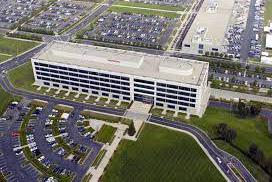
In the coming years, Honda will begin applying stationary FC power station technologies to Honda manufacturing facilities and data centers around the world. Honda is advancing hydrogen fuel cells to provide clean, safe and secure energy toward its global goal of carbon neutrality for all products and corporate activities by 2050.
A company spokesman commented: “The operation of a stationary fuel cell power station on its corporate campus in Torrance, Calif., marks Honda’s first step toward future commercialisation of zero-emission backup power generation. T

“The initiative leverages Honda’s hydrogen fuel cell technology expertise and contributes to the company’s global goal to achieve carbon neutrality for all products and corporate activities by 2050.”
Now fully operational as a demonstration program, Honda’s fuel cell power station supplies clean and quiet emergency backup power to the data centre on the campus of American Honda Motor Co., Inc.
In the coming years, Honda will begin applying a next-generation stationary fuel cell system to Honda manufacturing facilities and data centers globally, thereby reducing the company’s greenhouse gas emissions.
The demonstration stationary fuel cell unit has a capacity of approximately 500kW and reuses the fuel cell systems of previously leased Honda Clarity Fuel Cell vehicles, with a design that allows the output to increase every 250kW packaged with four fuel cells. It features the flexibility to change the layout of the fuel cell units to suit the installation environment and to accommodate cubic, L-shaped, Z-shaped, and other packaging configurations.
Future stationary FC units intended for commercialisation will utilise Honda’s next-generation FC system jointly developed with General Motors and also set to power an all-new fuel cell electric vehicle (FCEV) based on the Honda CR-V coming in 2024.
Over the last few years, the power requirements of data centers have been growing rapidly due to the expansion of cloud computing and big data utilisation, and the need for backup power sources has been increasing from the perspective of business continuity planning (BCP). The Torrance fuel cell station also serves as a proof of concept for future
commercialisation of the power generation unit.
“We believe there’s great promise in hydrogen fuel cells for backup power and offsetting potential peak power events,” said Koji Moriyama, project lead of the stationary fuel cell and principal engineer with American Honda R&D Business Unit.

“By installing and utilising our core technology, the fuel cell system, in various applications such as stationary power generation, Honda aims to stimulate hydrogen usage and provide clean energy for potential commercial customers.”
Data centres require highquality and reliable power, where any disruption in power supply can lead to downtime or problems such as data corruption and damage to servers.
Typical stationary backup generators rely on diesel fuel, which result in higher carbon emissions and local air pollutants.
Backup power systems utilising hydrogen fuel cells offer a promising future for clean, yet reliable and high-quality power generation, especially when operating on so-called “green hydrogen” made from renewable sources, with water vapour as the only emission. Hydrogen can be stored and transported with a high energy density, and can be refilled in a short time.
The “hydrogen circulation cycle,” which starts with renewable energy, consists of three phases – “generate,” “store / transport” and “use.”
Starting with the use of water electrolysis technology, electricity derived from renewable energy sources can be converted into green hydrogen, making it less susceptible to fluctuations in power generation due to seasonality and weather conditions.
It also becomes possible to then
transport the energy to where it is needed in the form of “green hydrogen” via transport by land, sea, and pipeline.
Based on Honda’s “Triple Zero” approach, which consists of three focus areas – carbon neutrality, clean energy and resource circulation –Honda is striving to realise a circular & resource-recycling society which aims for zero environmental impact by 2050.
Honda aims to create a closed loop, circular economy which maximises the useful life of materials in Honda products – including the fuel cell systems of Honda Clarity Fuel Cell vehicles for the demonstration stationary fuel cell unit.
By developing recovery systems to recapture materials of its products when they reach end-of-life, Honda can reuse, refurbish, repurpose and recycle them into new products and foster Honda’s circular economy.
Honda is taking a proactive approach to increase the use of hydrogen as an energy carrier and will strive to expand its hydrogen business.
In late 2022 Honda announced that starting in 2024 it will also produce an all-new hydrogen fuel cell electric vehicle (FCEV).
www.honda.com

Saft, a subsidiary of TotalEnergies, has been awarded a major contract by Meridian Energy to construct New Zealand’s first large-scale grid-connected BESS.
Located at Ruakākā in the country’s North Island, the 100-megawatt (MW) BESS will improve the stability of the national grid, as intermittent renewable power generation increases in New Zealand.
The BESS is the first stage of a project that will include the construction of a co-located 130 MW solar farm by Meridian Energy.
Saft is providing a fully integrated solution for the Ruakākā BESS, including supply of battery and power conversion equipment, installation, commissioning and 20 years operational services.
Scheduled to enter service in the second half of 2024, the BESS will have storage capacity of 200 megawatt-hours (MWh) to support the local grid demand for around two hours.
This versatile North Island asset will open multiple new revenue streams for Meridian, with the ability to load shift between price periods and participate in the North Island reserve electricity market. Meridian anticipates that the BESS will deliver annual revenues of up to US$35 million.
Meridian Energy Chief Executive Neal Barclay said:“As intermittent renewable generation increases in New Zealand, this BESS will help manage supply fluctuations and reduce this country’s reliance on fossil fuels.

“We have a bold vision for Ruakākā, with a grid-scale solar farm planned to further speed up our transition to a low carbon economy The shared infrastructure provided by the BESS will significantly improve the economics of the future solar farm.”
The complete BESS solution supplied by Saft will include 80 Intensium ® Shift battery containers, based on lithium iron phosphate (LFP) technology with 40 inverters Freemaq PCSK GEN3, 20 Medium-Voltage Power Stations and a Power Management System provided by third-party suppliers.
Saft will integrate this equipment with Meridian and Transpower 33kV switchgears, SCADA and power stations.
Suited to energy time-shifting, peaking and capacity support applications, Intensium-Shift 3 MWh containers are scalable building blocks. They can be installed in line-ups with power conversion equipment with a 50% smaller system footprint, while reducing 50% of site-related activities, allowing a faster
deployment of utility-scale storage plants.
Intensium-Shift containers benefit from Saft’s safety concept with a unique combination of proven and tested safety devices, such as fire suppression systems and blast panels.
Containers are built in Saft’s factories and adopt a modular approach, embedding batteries, thermal systems and digital control interfaces connecting to Saft’s cloud-based data platform I-Sight.
This end-to-end data management solution ensures real-time remote monitoring of system KPI’s and enables optimised asset utilisation with minimum OPEX and downtime.
Saft works in close partnership with customers, providing technical expertise and support from project inception and engineering, through implementation and commissioning to end-of-life, dismantling and recycling of containers.
. In 2022 Saft won a turnkey contract for a 7MWh battery energy

storage system (BESS) in a Norwegian archipelago in the Arctic.
Saft delivered the 6MW/7MWh system to the Longyearbyen community on the island of Svalbard for completion in late 2022.
The bulk of Svalbard’s population of slightly under 3,000 people live there.

The lithium-ion phosphate (LFP) BESS was housed in six containers based on Saft’s Intensium Max High Energy technology and will feature a fully integrated solution including power conversion and control systems. The BESS allows Longyearbyen to cut its emissions by 100% over time.
The BESS is located next to a coal-fired power station to provide reserve capacity and overcome fluctuations, as well as backup power. The coal station will close in 2023, after which the BESS will provide voltage and frequency control to integrate diesel generators and growing amounts of renewable energy.
www.saftbatteries.com
One of Turkey’s largest chicken meat producers covers a large part of its energy requirements with combined heat and power plants for generating electricity and heat.
Iltekno, MWM’s distributor in Turkey, planned and supplied the plants with the right equipment.
One of Turkey’s largest chicken meat producers is the food company Beypiliç, located in the province of Bolu.
Beypiliç produces a wide range of poultry meat products at several plants in Bolu and near Ankara. Founded in 1979, the company is one of Turkey’s 100 largest industrial companies and employs almost 3,300 people.

In 2010, Beypiliç invested in a turnkey cogeneration plant with two MWM gas gensets, each with a capacity of 4.3 MWe, for its plant in Bolu.
Iltekno, Caterpillar Energy Solutions’ regional distributor, supplied and installed the CHP. With this CHP, a close partnership between Beypiliç and Iltekno developed, which has lasted more than twelve years.
Between 2010 and 2022, the co-operation was consolidated by further commissioning seven MWM gas gensets at several locations.
In Bolu, for example, the capacity of the existing CHP plant was expanded by the purchase of two MWM TCG 2032 V16 gensets. This means that nine MWM gas gensets generate electricity and heat for Beypiliç.
A pioneering company in its sector
Poultry rearing facilities, slaughterhouses, feed production, and food production - all these divisions of Beypiliç require large amounts of energy and heat.
Hamdi Tanrıkulu, a member of Beypiliç’s board of directors, explains background to the decision in favour of Iltekno’s plants: “During our evaluations conducted in early 2010, considering that distributed energy systems would be more important in Turkey, we decided to invest in gas-engined cogeneration power plants.
“Gas-engine systems have high electricity generation efficiency, high availability rates, and low maintenance costs, and they are suitable for stop-start operation, which attracted us as a much more suitable system than other distributed energy generation systems.”
This is especially true of gas engines which can reach high efficiency levels and become very advantageous financially - especially when you consider the points where the hot water obtained from the jacket water can be effectively used within the facility,”.
Alongside the order for nine MWM gas gensets, long-term complete maintenance contracts were signed for all plants.


“Iltekno’s experienced teams of technicians are located in many regions of Turkey, so we have never had any major problems with our plants, both during planned maintenance and during breakdowns in general,” says Tanrıkulu, praising Iltekno’s service.
A productive partnership for more than 12 years
Beypilic uses the CHP plants to supply its electricity to the company’s various divisions and cover almost all of the electricity requirements of the individual factories.
The thermal output of the CHP plants is mainly used to provide process steam for food production.

The electrical efficiency of the plants is 43.8 %; when heat is used, the overall efficiency is over 90 %.
Using cogeneration, Beypiliç has saved around 150,000 tons of CO2 since commissioning, compared with conventional energy supply.
This is roughly equivalent to the amount of CO2 a passenger car would emit if it circled the earth 150 times.
“We have expanded our gas engine cogeneration power plant investment, which started in 2010, over the years, and reached nine engines in total,” says Hamdi Tanrıkulu
“One of the important factors in making such big investments was our confidence in Iltekno and MWM, which has more than 150 years of experience.”
He concludes: ”Our power plant investments of more than 12 years enabled us to make financial savings and provided us with uninterrupted and clean energy, which resulted in a serious competitive advantage in our favor.”
www.mwm.net
Siemens Energy has supplied 4 x 2MW Hydrogen-ready generators for an industrial client based in Ontario, a city in southwestern San Bernardino County in the U.S. state of California.The customer’s site is roughly 35 miles (56 km) east of downtown Los Angeles and 23 miles (37 km) west of downtown San Bernardino, the county seat.

Located in the western part of the Inland Empire metropolitan area, it lies just east of Los Angeles County and is part of the Greater Los Angeles Area. As of the 2020 Census, the city had a population of 175,265 people.
The city is home to the Ontario International Airport, which is the 15th-busiest airport in the United States by cargo carried.
Ontario handles the mass of freight traffic between the ports of Los Angeles and Long Beach and the rest of the country.
SIEMEN’s manufacturing client in Ontario now operates a facility which can rely on electrical power from an 8 MW ‘carbon neutral’, peak mitigation, backup power system offering demand response, an operating reserve and fully-financed engine solution. SIEMENS is also involved in another similar 6 MW and 10 MW solution being built for the same customer.
Looking at hydrogen’s potential Siemens Energy has effectively combined its unique portfolio of gas and steam turbines, electrolyzers, and heat pumps, and turning it into a unique optimised power plant solution with one operating system.

Siemens’ hydrogen power plant includes an H2-fired gas turbine (e.g. SGT5-9000HL, SGT-800, or SGT-400), electrolyzers with H2 compression and storage, and our Omnivise fleet management system to integrate all components including renewable energy sources feeding electricity into the electrolyzer.
According to the company combining the full re-electrification of hydrogen with heat generation can significantly increase the overall efficiency of the hydrogen power plant solution. This option includes a heat pump for heat recovery and a thermal storage system as buffer.
The heat pump captures waste heat from the electrolysis process and increases its temperature to feed either directly into a district heating network, or temporarily store it in a thermal energy storage system as a buffer before feeding it into the heat network.
A spokesman commented: “Our hydrogen power plants reduce CO2 emissions, which helps our customers to achieve their decarbonization goals.
“Siemens Energy integrates the different components into one plant solution. Renewable energy is used to produce hydrogen when it is abundantly available,” he explains.
“The power plant re-electrifies the energy when renewables can not meet the demand. The Omnivise control system optimises supply and demand between the different elements of the solution.”

What H2 will mean for clean energy production
Today, the world produces 75 million tons of hydrogen each year. Most of it is generated from fossil fuels, mainly natural gas and coal.
This accounts for 6% of the global natural gas consumption, 2% of the global coal consumption, and results in 830 million tons of carbon-dioxide being released every year – almost as much as Germany’s annual CO2 emissions.
Producing all of this hydrogen with green energy will help to substantially reduce emissions. The future market for this tiny molecule is huge.
Siemens Gamesa and Siemens Energy are joining forces to kickstart a new era of offshore green hydrogen production that will power a cleaner future.
Together, they are developing an innovative solution which fully
integrates an electrolyzer into an offshore wind turbine as a single synchronised system to directly produce green hydrogen.
Siemens Gamesa is adapting the world’s most powerful turbine, the SG14-222 DD offshore wind turbine, to integrate an electrolysis system seamlessly into its operation.
Siemens Gamesa’s modular approach ensures a scalable offshore wind-to-hydrogen solution.
Siemens Energy is developing a new electrolysis product which meets the needs of the harsh maritime offshore environment and is in perfect sync with the wind turbine.
The developments will serve as a test bed for making large-scale, cost-efficient hydrogen production a reality and will prove the feasibility of reliable, effective implementation of modular offshore wind-to-hydrogen systems.
Siemens Gamesa and Siemens Energy will target a total investment of approximately EUR 120 million over the next five years in the ongoing development of this innovative solution, with a full-scale offshore demonstration expected to be achieved by 2025-2026.
www.siemensgamesa.com
The Red Sea Project is a major land and property development announced by the Saudi Crown Prince Mohammad bin Salman in July 2017 and very much in full-swing in 2023. It is being established on the Saudi Arabian Red Sea coast.

The project is primarily focused on tourism, with facilities to encourage tourists to stay and explore the Saudi Western Coast.
Zahid Tractor was selected by a major contractor to supply power solutions which deliver 32MW of prime power for The Red Sea Project, a nearly 11,000 squaremile (28,000 sq km) fully-regenerative tourism destination currently under development along Saudi Arabia’s west coast.
Zahid Tractor is currently supplying 69 generator sets capable of running on both conventional diesel and B100 biodiesel to supply energy during the construction phase of The Red Sea Project. The luxury tourist destination will include a total of 16 hotels, an international airport and other commercial operations scheduled for completion in 2023.
The project involves supplying and maintaining field-proven gensets fed by various eco-friendly hydrotreated vegetable oil (HVO), biodiesel, and blended fuel products.
Zahid Tractor has already delivered, installed and commissioned most of the generator sets in weather-resistant, sound-attenuated enclosures which are currently being used to support construction activities and workforce accommodations.
Most of the genset units are equipped with Connect Remote Access Monitoring (RAM) sensors, an advanced data visualisation, reporting and alert offering from Caterpillar.

The technology provides data visualization, reporting, and alerts from anywhere in the world through an easy-to-use web interface or mobile app. Cat RAM helps operators and Cat dealers track and manage the operation of Cat generator sets, flag potential problems, perform remote troubleshooting, manage operational expenses, and leverage long-term archives of site performance history to identify opportunities for further operational or system enhancements.
Zahid Tractor is also addressing uptime needs through Customer Value Agreements (CVAs), which include customer technician training, regular maintenance at scheduled intervals, and around-the-clock, on-demand technical support.
“The Red Sea Project is a global showcase for demonstrating how large-scale economic development projects can incorporate sustainability into their operations to help them achieve their business goals,” comments Bart Myers, general manager.
“Zahid Tractor has the advanced technologies and local expertise needed to support every phase of this high-profile project and help attain its business and sustainability targets.”
Managed by The Red Sea D evelopment Company, The Red Sea Project is one of three giga-projects included in Saudi Arabia’s Vision 2030.
With sustainability at its core, The Red Sea Project encompasses an archipelago of more than 90 islands, desert landscapes, mountain canyons, dormant volcanoes, and ancient cultural and heritage sites.


The project will include hotels, residential properties, leisure, commercial and entertainment amenities, supported by infrastructure that emphasises clean renewable energy, full decarbonisation, water conservation and reuse, and a circular waste management system for achieving zero-waste-to-landfill goals.
www.zahid.com

How do professional UPS users ensure they install a UPS that always provides them the highest level of power protection at the lowest possible cost throughout the UPS’s working life? This is the question posed by By David Bond, Chairman, Centiel UK [right].
The answer is either have a perfect vision of the future or install a scalable UPS.
Most organisations have a critical load comprising IT equipment that must be fully operational at all times, so they need an Uninterruptible Power Supply (UPS).
UPS systems have a useful working life of 12-15 years which, in a typical IT environment, will see 3-4 generations of server etc. upgrades.
It is also likely to see changing load demand as the organisation’s business expands or contracts, so how does the organisation ensure they fit the right sized UPS for both now and the future?
This is the solution most often seen on a site. If lucky, the organisation will be able to measure its existing critical load and have a good starting point for UPS sizing but what does the future hold?
Installing a UPS that is the right size for today may prove to be an expensive mistake in 2-3 years’ time when an IT upgrade or business expansion occurs and the new UPS is now too small.
Replacing a relatively new UPS wastes CAPEX and is highly disruptive to site operations so fitting a larger than currently necessary UPS “just in case” often appears to be a good solution.
After various levels of Management and the Consultant etc. have each added their little bit of “just in case”, the UPS finally selected UPS will be oversized, wasting both CAPEX (Capital Expenditure) and OPEX (Operating Expenditure).
Large UPS are more expensive to purchase than small UPS so there is an inevitable hit to CAPEX but wasted CAPEX is only part of the problem.
Not properly maintaining a UPS is very unwise and large UPS cost more to maintain than small UPS, so maintenance costs need to be considered.
Maintaining a UPS is not wasting OPEX but paying to maintain a UPS that is oversized definitely is.
UPS operate more efficiently when they are more heavily loaded than when they are lightly loaded. This lower operating efficiency wastes expensive energy and therefore wastes OPEX.
For example, if a site installs a 300kW UPS for a 100kW load the UPS will operate at a suboptimal point on the efficiency curve. If the UPS operating efficiency is only 1% worse than optimal, for a 100kW load, 1kWH is being wasted every hour. At 50.897p/kWH (accurate at the time of writing) the UPS will waste £4,458p/a or £44,585 over its typical 10 year useful working life.
Both single and three phase modular UPS list scalability amongst their many operational benefits. The ability to “pay-as-you-grow” means that an organisation can plan for its future UPS needs but not pay for it until needed. Taking the 100kW load example from above. The
organisation could install a CumulusPower three phase modular UPS cabinet capable of supplying 300kW but only fit two 60kW UPS modules into the cabinet.
This will minimise both CAPEX and OPEX by only paying to purchase and maintain the 120kW currently needed and operating the UPS at an optimal point on the efficiency curve.
The future is also protected because if the UPS load ever increases above 120kW a third 60kW UPS module can be fitted into the UPS cabinet increasing it to 180kW, and so on up to 300kW.
Three-phase modular UPS cabinets capable of supplying up to 900kW are available making the benefits of scalable UPS available to almost all organisations.

Oversized UPS are inefficient and cost more to buy and maintain. The correct sizing of a UPS ensures efficiency in system design and reduces its overall total cost of ownership (TCO).
Centiel’s true modular UPS are scalable, so an organisation can install what it currently needs and can add UPS capacity, when needed, using a “pay-as-you-grow” approach.
Only the UPS’s electrical infrastructure needs to be ready for future growth, allowing for system upgrades without the need to transfer the load to bypass or a site shutdown.
Centiel’s sales engineers act as trusted advisors to all its clients and

ensure that all Centiel’s UPS systems are perfectly sized to cost effectively meet all their clients’ needs.
At CENTIEL our design team has been working with critical loads for many years at the forefront of technological development.
We are the trusted advisors to some of the world’s leading institutions and our UPS product range contains class leading free standing and true modular UPS, providing the lowest total cost of ownership (TCO) because of very high level of operating efficiency and low maintenance costs.
For more information about Centiel’s full range of UPS solutions please see: www.centiel.co.uk
For 90 years we’ve provided prime and standby power for over 3 million generator sets. Today, our 5-2500 kVA engines are powering communities, livelihoods and businesses.
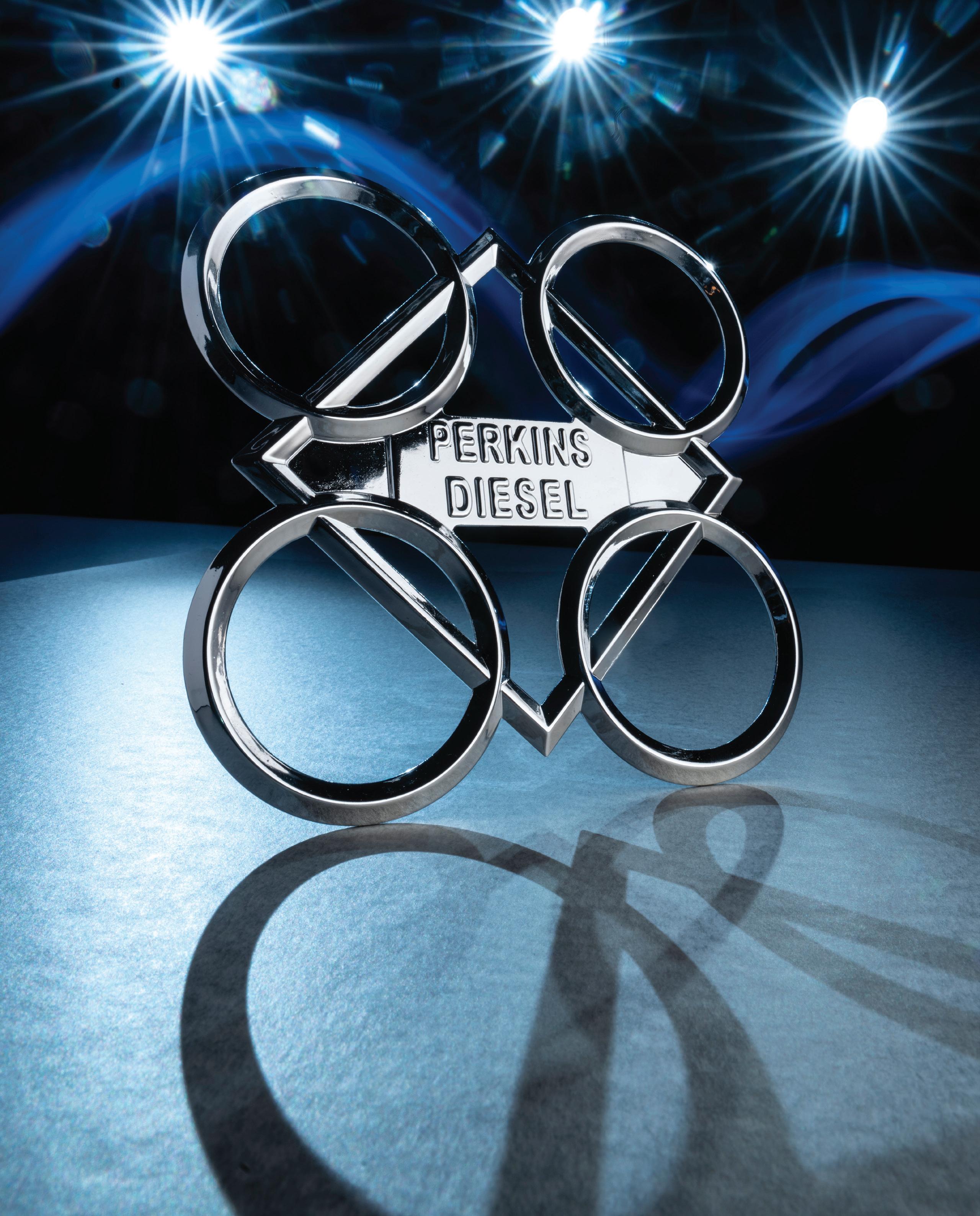
Amodel DP222LBF DOOSAN engine is the key power provider for a HDW-675 T5 three-phase soundproof generator set now at CMCPInternational Paper - one of the largest paper and cardboard production plants in Morocco.
The newly-installed genset with its STAMFORD alternator currently ensures a stable and reliable backup power supply in case of power failure.
CMCP-International Paper is Morocco’s largest integrated supplier of corrugated boxes, serving customers across multiple sectors, including fruit & vegetable, food & beverage, automotive, electronics, ceramics, chemicals, and textiles.
A spokesman for the company comments: “ CMCPInternational Paper is a single point of contact for all your packaging needs. We offer complete, superiorvalue packaging solutions with best-in-class services and logistics. Choose from all types of corrugated packaging, including sustainable punnets in many forms and shapes, or triple-wall for heavy duty applications.
“If you are in the fruit & vegetable sector, you can benefit from our unique network of erecting centres for assembly and storage.”
The CMCP site has bought and installed an HDW-675 T5 three-phase soundproof generator. This has been produced in factory facilities which have received leading certifications such as environmental (FSC™, PEFC, ISO 14001), quality (ISO 9001), occupational health and safety (ISO 45001), and food safety (BRC), among others.


It meets the following regulations: 2006/42/CE Machinery safety; 2014/30/UE Electromagnetic compatibility; 2014/35/UE electrical equipment designed for use within certain voltage limits; 2000/14/ EC Sound Power level. Noise emissions outdoor equipment. (amended by 2005/88/EC); and EN 12100, EN 13857, EN 60204.
At the heart of the genset is a 4-Cycle, V-type, 12cylinder, turbocharged & intercooled (air to air) engine which is both rugged and reliable.


The engine’s dry weight is 1,420 kg (with Fan). Its bore x stroke measures 128 x 142 mm. The engine dimensions (LxWxH) are 1,738 x 1,389 x 1,258 mm and it has a displacement of 21.927 litres.
The compression ratio is 15:1 while the rotation is counter-clockwise viewed from Flywheel. There are 160 teeth on the Flywheel.
Other features include: * Injection timing 21˚±1˚ BTDC @ 1800 rpm, 19˚±1˚ BTDC @ 1500 rpm.
It is a tough model: Maximum Bending Moment at Rear Face to Block is 1,325 N.m..
The DP222LBF DOOSAN engine has a Maximum Back Pressure of 5.9 kPa. The Air Induction System is as follows: Maximum Intake Air Restriction with Clean Filter Element is 2.16 kPa. With Dirty Filter Element it is 6.23 kPa. Max. static pressure after Radiator is 0.125 kPa. The Cooling Systems on the enghine depends on water circulation by centrifugal pump on engine (fresh water forced circulation).
Keeping the engine cool in Morrocco’s hot climate is a challenge but the coolant capacity of the engine is as follows: approx. 23 litres, with Radiator(Air On 43°C) : Approx 114 litres.
*Coolant flow rate: 660 litres / min @ 1800 rpm, 550 liters / min @ 1500 rpm.
*Pressure Cap Max. 49 kPa
* Water Temperature - maximum for Standby and Prime Power: 103 °C. Before start of full load 40 °C. The water pump is a centrifugal type driven by belt
* Thermostat Type and Range Wax –pellet type, Opening temp. 71°C , Full open temp. 85°C.
* Cooling fan Blower type, plastic , 915 mm diameter, 9 blades. Two radiator options are provided, based on allowable maximum Air temperature On radiator inlet (Air
On) : Air On 43°C / Air On 52°C - ATB (Ambient Temperature before Boiling) of generator set varies depending on the engine room ventilation design, even if the same radiator applied, explainsd Doosan. The company advises that ‘adequate selection of radiator options by means of the cooling test is highly recommended, and generator set makers are responsible for the selection’.
The engine’s fuel system is based around a Bosch type in-line pump with integrated, electromagnetic actuator. The diesel fuel feed pump has capacity of 630 litres/hr.
Battery Charging depends on a 27.5V x 45A STAMFORD alternator with a built-in type IC regulator. www.doosan.com
The Government’s Review of Electricity Market Arrangements (REMA) will create a smarter, more flexible & transparent electricity market that can meet the evolving needs of people and businesses in a world powered by electricity. Where we are right now: The current state of the electricity market arrangements in the UK can be compared to a football team.
However, like any team, there are some players who are past their prime and may be slowing the team down. The goalie is pretty unreliable, and keeps wandering away to have a cigarette, while there is no clear captain, meaning the team often loses focus and misses important opportunities.
REMA presents a chance to make some changes in the team. However, if it is mishandled or poorly implemented, it could lead to a situation similar to Chelsea this season, who have been characterised by a lack of teamwork and collaboration, with each player focused solely on their individual performance and ego.

This approach can lead to a lack of cohesion, poor results, and ultimately, huge expenses for the industry and consumers. Where we could be if we get it right:

If REMA is successful and well-executed, it could be like Manchester City this season. Like Man City, the electricity market could become a collection of world-class individual components, each pushing forward with their own unique strengths, but always willing to assist and support each other. This approach can lead to a powerful and dynamic team, which is more efficient and effective at meeting the needs of the industry and consumers.
See: https://www.theade.co.uk/assets/ docs/nws/REMA_briefing.pdf

Dr Sarah Prichard has pledged to support the Association of Consultancy and Engineering (ACE) and the organisation’s members as they come together and face the “challenge of a generation”.
She believes membership of ACE gives companies of all sizes a stronger voice and a greater impact when it comes to putting the built environment sector at the heart of the global net zero challenge.
The partner and managing director for UK Buildings, Hong Kong and China at Buro Happold is also focused on ACE’s delivery of its 2022 to 2025 blueprint.
Dr Prichard believes this blueprint will support ACE members in being more impactful and driving economic growth across the UK, whilst developing skills for a greener future and ensuring the industry continues to focus on safety, equality and inclusion.
“The Association for Consultancy and Engineering is the industry body responsible for representing the views of 400 member organisations in the sector and has a leading voice, showcasing the industry’s role in tackling climate change,” Dr Prichard says.

“Through working with and representing the views of member firms, from micro-organisations to those representing tens of thousands of employees, it works with the UK and devolved governments to shape policy and ensure the industry gets the recognition it deserves.
“As Chair of ACE, I will support the CEO in implementing the Blueprint, and ensuring it has a significant impact on the industry.”
She adds it is crucial that member organisations unite and promote consultancy and engineering in the UK, to increase the profile of the industry overall.

An IPowerE One Day Seminar Diverse Solutions for De-Carbonisation’ will be held on 27th September 2023 - IGEM House, Kegworth.

This one-day Seminar is aimed at examining today’s energy challenges demand a full range of solutions to de-carbonise the power sector. Conventional gas fired plant will continue to support the Energy Transition, with changes to despatch, control, and fuels used.
Energy storage will, be it in battery or grid scale solutions, be used to complement renewable systems, deployed at increasing scale. Grid control and management will assume great importance as today’s energy transmission and distribution systems are adapted to meet tomorrow’s requirements. This seminar will bring many of these themes together, providing information and the opportunity for discussion and debate amongst your Power Engineering peers. With the added opportunities for networking and discussions in smaller groups during the day and the excellent venue, this should be both an informative and enjoyable day.
Meetpoint Midlands is a quiet, relaxed and friendly meeting centre based in Kegworth in the East Midlands. Conveniently located just off junction 24 of the M1, three miles from East Midlands Parkway train station and four miles from East Midlands Airport allowing easy access for delegates and free parking.
Please contact the office for more information Tel +44 (0)1234 214340 or email: enquiries@ipowere.org
Key points: Registration is from 9:00am and the Keynote Speaker talk will be commencing at 9:15am. Morning Presentations will be followed by a Buffet lunch. After lunch the Afternoon Presentations will commence, followed by a Panel Discussion and a Finish- approx 16:00pm.
The UN Climate Change Conference (COP26) has highlighted that an unprecedented shift in progress will be needed to enable governments worldwide achieve Net Zero Strategies by 2050. In the lead up to COP26 the UK’s Net Zero Strategy has been discussed as part of the most recent IPOWERE Webinar Series during which the UK’s ten-point plan for a green industrial revolution was discussed by industry experts.
THE ENERGY SYSTEM IS ABOUT TO BE REVOLUTIONISEDAND HERE’S HOW

Qnergy’s PowerGen system is the first generator to enable 100% methane destruction. This unique Free Piston Stirling Engine (FPSE) demonstrates superior environmental performance, exceeding EPA guidelines by orders of magnitude, according to independent third-party testing.
The results conclusively show that, for the first time, environmentally-friendly, utility-grade electrical power can be sourced from methane generation at the site, using a generator with zero methane slip.

The proven system is already in use on more than 1,000 sites across the Americas, where it has delivered more than 15 million hours of reliable power, with a maintenance-free engine. Qnergy’s unique PowerGen technology is based on an external combustion engine, with a clean-burning external combustor designed to work with any gaseous fuel.
It uses power electronics and software to control for variable raw source fuel feedstocks. Third party researchers tested the performance of the PowerGen, finding that combustion resulted in >99.998% (~100%) methane destruction efficiency, with particulate matter, CO, and NOx emissions levels at 0.11, 0.30, and 1.1 g/kW.hr, respectively, that meet and exceed EPA emission criteria.
Methane is a potent greenhouse gas, with 84X the global warming potential of CO2 over its first 20 years when allowed to escape into the atmosphere. The productive use of methane waste is a global challenge, given the many distributed sources, from upstream well pads in the energy industry to farms and organic waste sites. These diverse methane sources all require power to capture, store, and/or convert methane into useful energy.
Historically, facilities that emit methane have been unable to use raw gas methane as a fuel, due to the challenges of corrosive contaminants, fluctuations in flow, and purity - until the development of this system. qnergy.com

Battery cell types are infinitely adaptable - from cylindrical shapes to punch and prismatic hard cases. Now Mersen and F&K DELVOTEC have joined forces to combine electrical and thermal improvements, leading to a thin and single-layer laminated bus bar.
Thanks to design optimizations and simulations, this technology is compatible with laserswelding, allowing fast interconnection of cells. To reduce cell welding process time and manufacturing cost,
Mersen has developed a new and dedicated laminated bus bar design specifically developed for battery application and laser welding process: the Infini-cell® bus bar. This new welding process is more than four times faster than the conventional combination of wire / ribbon insertion and welding method, and can provide a process time reduction of up to 60%. The lightweight single layer Infini∞cell bus bar solution is a combination of laminated insulation and thin conductive materials. Thanks to the thin conductive layer between 0,2 and 0,5 mm, battery cells can be easily welded to the bus bar connections using laser welding. ep-us.mersen.com
CENTIEL UK has confirmed its new single phase modular UPS solution has been met with unprecedented interest within the market.
CumulusPower 11 now ensures single phase critical loads can take advantage of the same high quality, high availability power protection previously only achieved with three phase UPS.

Centiel’s new single phase modular UPS provides the same increased availability or uptime, and no single points of failure due to its DARA architecture, as Centiel’s three-phase solution. Just like the award-winning three phase modular CumulusPowerTM, the single-phase version ensures “9 nines” (99.9999999%) availability to effectively eliminate system downtime; class-leading 97.1% on-line efficiency to minimise running costs; true “hot swap” modules to eliminate human error in operation and high-quality, long-life components to reduce Total Cost of Ownership (TCO).
The CumulusPower 11 is available in either 10kW or 20kW capacity or 20kW N+1 redundancy in a single cabinet. A range of CumulusPower 11 cabinet types are available that include integral batteries and rack independent housings for incorporation into existing 19” racks offering increased flexibility and enabling use of space to be maximised.
When asked about the difference the single phase CumulusPower 11 will make to single phase power protection, Louis McGarry, Centiel UK’s Sales & Marketing Director commented: “It’s opened the market right up, single phase critical loads could previously only receive the highest levels of availability or power or uptime through expensive alterations to a site’s electrical infrastructure. Now, Centiel’s new single phase modular CumulusPower 11 can be installed easily into 19” cabinets or into discrete UPS cabinets. The single phase modular CumulusPower 11 is a game changer for the power protection of single-phase critical loads.”
For further information please see: www.centiel.co.uk
VACUUM CIRCUIT-BREAKER
THE
ABB has designed a next generation extreme weather resistant housing cabinet for its R-MAG® magnetically actuated dead tank breaker for medium-voltage primary substations.

Available for 15, 27 and 38kV units, the housing has been designed to the stringent NEMA 4 rating standards, offering unparalleled protection against even the most severe water and dust ingress.
Featuring seamless roof-to-wall joints and external self-sealing bolts that prevent any gaps, the housing is completely secure and watertight. A new roof overhang also helps limit water exposure, plus the bushings-to-roof interface is secured by a superior aerospace-grade UV-resistant and more robust gasket.
These technological improvements on the traditional NEMA 3R housing make this R-MAG® magnetic outdoor circuit breaker altogether safer and more reliable. Additionally, ABB is also releasing a new Arc Resistant housing variant for the R-MAG® breaker. This new enclosure ensures any fire and gases are expulsed in a controlled manner in the event of an internal arc fault; there is increased protection for substation personnel on all sides of the equipment, much lower risk of failure and downtime, plus faster overall restoration of the system. www.abb.com




























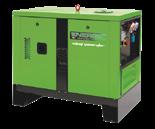






















T +43 5244 600-0 F +43 5244 600-527 jenbacher.info@ge.com www.gejenbacher.com
Manufacturer of gas driven generator sets and cogeneration systems in a power range from 0.25 to 3 MW.
R Schmitt Enertec GmbH
56743 Mendig, Germany T +49 2652 9351810
F +49 2652 9351822 info@rschmitt-enertec.com

www.rschmitt-enertec.com
Manufacturer of gas driven engines,generator sets and cogeneration systems in the range from 100 - 500 kW.
RSE Engines for natural gas and biogas
Ratings natural gas standard, NOx ≤ 500 mg/ m3N. Dry exhaust gas; based on 5% O2. For engines with 1,200 rpm please contact GE Energy’s Jenbacher product team.
Peterborough PE1 5FQ
Contact name:- Simon Gray
Tel: +44 (0) 1733 583000
Email: gray_simon_j@perkins.com
Perkins is one of the world’s leading suppliers of off-highway diesel and gas engines, offering dependable cost-effective power up to 2500 kVA in dieselor 1000 kWE prime in gas.


SE-151 87 Sodertalje Sweden
Tel +468553 81000
Fax +468553 898 12
E-mail engines@scania.com
Web www.scania.com
UK Contact – Mark Swindell
Scania GB Ltd
Tel +44 1908 329386
E-mail mark.swindell@scania.com
Diesel & Gas engines for power generation
Prime power 250kVA to 700kVA Stand by power 250kVA to 770kVA
Engine range prime power 50hz & 60hz at (70% mean load factor)
Scania produce diesel and gas powered engines for various Industrial and Marine applications, superior quality and reliability, offering exceptionally low fuel consumption.

All models are available to meet current emissions requirements, Scania engines are now available to meet both Tier 4F and EU Stage V. Alternative fuels
Many of our engines can also operate on Bio-diesel conforming to EN14214 and HVO conforming to EN159540


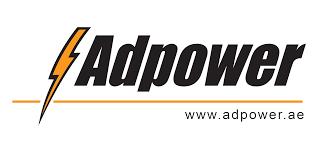








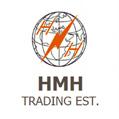






















INNIO*’s flexible, scalable, and resilient Jenbacher* CHP and CCHP energy systems deliver power, heat and/or cooling for your local site while supporting your decarbonization efforts. Yielding up to 95% total efficiency, cogeneration can reduce your energy consumption and CO2 emissions by more than 30% compared to the separate generation of power and heat, significantly lowering your energy costs. Combined with heat storage, you can operate your asset flexibly. Jenbacher CHP and CCHP systems run on a wide range of gases with the option of converting to H2** operation once that fuel is more readily available.
Join us on our path for a sustainable future! jenbacher.com
* Indicates a trademark.
** In general, “Ready for H2” Jenbacher units can be converted to operate on up to 100% hydrogen in the future. Details on the cost and timeline for a future conversion may vary and need to be clarified individually.

ENERGY SOLUTIONS. EVERYWHERE, EVERY TIME.
